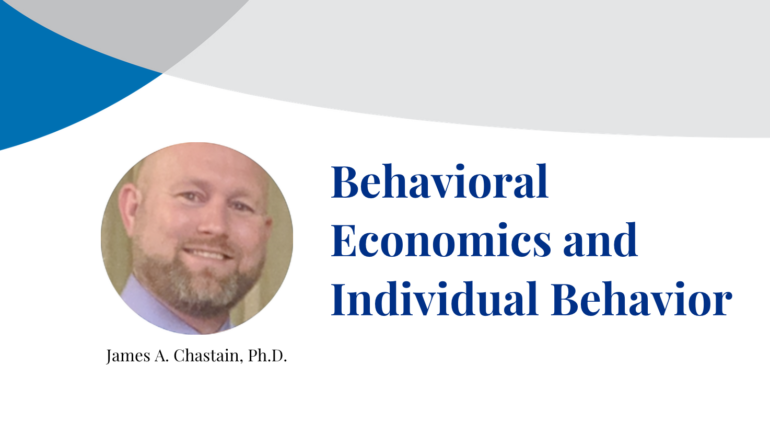By James A. Chastain, Ph.D.
B.F. Skinner said in his book, “Science and Human Behavior” (1953), “If the science of economics were to take all … extra-economic variables into account, it would become a complete science of human behavior,” and “an adequate science of behavior should supply a satisfactory account of the individual behavior which is responsible for the data of economics in general.”
These statements highlight two related points:
- Economics is, at its core, an attempt to understand the vast data generated by many humans behaving individually together.
- A complete science of individual human behavior would necessarily provide the tools to account for all economic data.
Behavioral economics as a framework for understanding human behavior broke into public awareness in the early 2000s, but its roots go back decades.
In the late 1960s, psychologists Daniel Kahneman and Amos Tversky teamed up to investigate why economic data frequently lead to conflicting theories, which seldom produced accurate predictions for how individuals behave. Their research yielded clear, compelling insights, summed up simply: Economic models rely on a hypothetical (possibly mythical) creature, Homo Economicus—the rational human—and people rarely, if ever, behave rationally on a consistent basis.
Throughout the 1970s and 1980s, professional behavior analysts and researchers such as Steven Hursh, Howard Rachlin, and Leonard Green, working within the framework of behaviorism, began to ask how we might utilize the theories, models, and predictions of economics to understand and improve how humans behave under various circumstances. Since then, the combination of behavior analytic concepts, principles, and methods, together with economic models and predictions, have demonstrated promise in understanding how individuals allocate their limited time and effort.
Behavioral economics within the field of behavior analysis views behavior as a finite resource, which we choose to allocate over time, like money or capital in economics. As with money, how people choose to “spend” their behavior is directly tied to what they get in return. They will reliably allocate their time and effort to obtain the things they want and need. Similarly, as with anything they “buy,” when “prices” increase, they decide whether to work harder for those things—allocating more time and effort—or to turn their efforts to something else.
Human behavior seems to adhere to many economic models and predictions, albeit through how people choose to allocate time and effort more so than money.
Here are more (simplified) insights of behavioral economics:
- The ratio of effort to reward is much the same as “unit price” of goods. A child completing 10 math problems in exchange for five minutes of iPad time will tend to work the same when completing 20.
- “Demand” changes according to “price.” When my friend lived next door, I visited often. When she moved 2 miles away, I still visited as often. When she moved out of town, and then out of state, my visits decreased with each increase in distance. The increasing “price” of visiting became unsustainable.
- Effort sustained in a “closed economy” breaks down in an “open economy.” If Junior earns cookies only by doing chores, chores get done. if Grandma next door offers cookies in exchange for hugs, chores go unfinished.
- The things we work for may have “complements” or “substitutes” that effect our choices. When the weather is nice and 1st-grade students know outside play is available, they are willing to work for access to sports equipment, because outside play and sports equipment are complementary; if the teacher increases the work requirement to go outside while keeping the “price” of arts and crafts low, the students shift preference to arts and crafts, because outside play and arts and crafts are substitutes.
These are just a few examples of how economics and behavior analysis coordinate in the study of behavioral economics. In research and practice, the principles and applications extend far and wide to ever more complex situations and arrangements.
Understanding, predicting, and to some degree controlling how people allocate their finite time and effort within these models of individual behavior can help us to improve human experience and productivity in a wide array of contexts.

